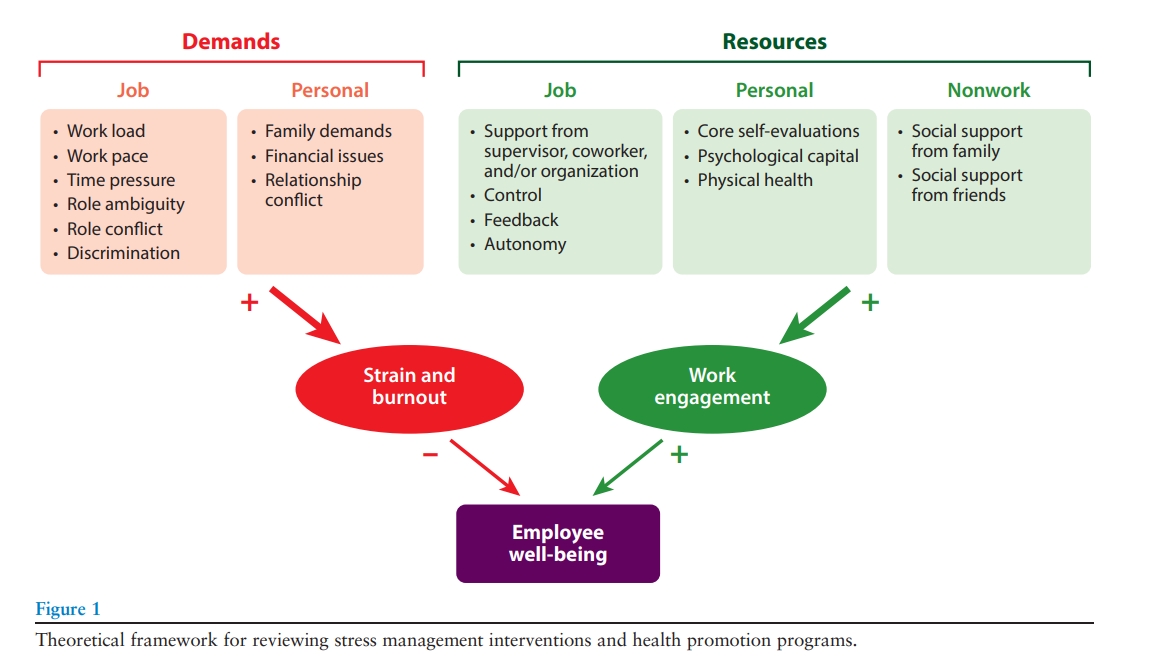(W3) Tetrick+Winslow, 2015
1/15
Earn XP
Description and Tags
Workplace stress management interventions and health promotion
Name | Mastery | Learn | Test | Matching | Spaced |
|---|
No study sessions yet.
16 Terms
Top 5 causes of workplace stress
low salaires
lack of opportunities for growth
job insecurity
uncertain/ undefined job expectations
long hours
job demands-resources model (JD-R)
dual process model: job demands and resources can lead to exhaustion or motivation which affects the organisation and the indiv
JD-R first process
=health impairment process
poorly designed jobs and chronic demands results in poor outcomes for employees and organisations through depletion of mental and physical resources
second process JD-R
=motivational process
resources can function as motivators to the extent that they are instrumental in attaining work goals or they promote growth and developnment
resources → work engagement → better outcomes for employees and organisations
JD-R model (pic)

STRESS MANAGEMENT INTERVENTION»
»
primary intervention
proactive and prevention oriented, focusing on all employees (systems apporach)
secondary interventions
focus on employees at risk, trying to eliminate risk factors
tertiary interventions
focus on people in distress and need of recovery
hierarchy of effectiveness
primary interventions were most effective and tertiary least
relaxation interventions
less effective than cognitive behavioral interventions
CB interventions are more proactive and change cognitions → more useful in restoring and enhancing personal resources and reframing demands
systems approach interventions
incorporate both individual and organisation levels
more useful than multimodal techniques (multiple interventions at an individual level) because these require a lot from an individual
more useful than just targeting one (indiv or orga)
mindfulness based interventions
here primary intervention
relieve stress and facilitate adaptive responding to stressful events in employees because they teach you to accept and experience things in a non-judgemental way
recovery interventions
promote processes and experiences to alleviate the negative effects of work stress
workplace wellnss programs
stress management programs are often secondary or tertiary interventions while wellness is primary
focus can be on:
communication and awareness
screening and assessment
education and lifestyle
behavior change and support
positive psychology workplace interventions
focus on positive things and incr positive aspects of wellbeing instead of decr negative
advantage : people can do it individually
psychological capital: self efficacy, optimism, hope, and resilience, training interventions incr these are effective